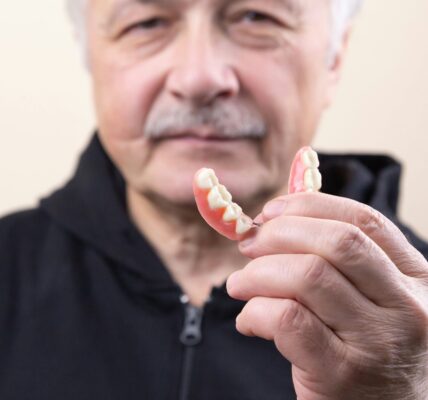Periodontal disease, also known as gum disease, is a prevalent condition that affects the tissues surrounding and supporting the teeth. If left untreated, it can lead to tooth loss and impact overall health. Fortunately, there are several effective treatments available to manage and reverse the effects of periodontal disease, ranging from traditional methods like scaling and root planing to advanced therapies like laser treatment. In this article, we’ll explore the top treatments for periodontal disease and how they help restore oral health.
Understanding Periodontal Disease
Before diving into treatments, it’s essential to understand periodontal disease’s stages. Periodontal disease progresses in stages, starting with gingivitis, the earliest form of gum disease. Gingivitis is characterized by red, swollen gums that may bleed when brushing. If untreated, gingivitis can advance to periodontitis, where the infection spreads deeper into the gum tissue, affecting the bone and leading to tooth loss if not addressed.
1. Scaling and Root Planing: The First Line of Defense
Scaling and root planing (SRP) is often the first line of defense against periodontal disease. This non-surgical treatment is typically recommended when a patient has early-stage gum disease or periodontitis.
- Scaling involves the removal of plaque and tartar buildup from above and below the gumline. Plaque and tartar are the primary culprits behind the inflammation and infection of gum tissue.
- Root Planing smooths the surfaces of the tooth roots, helping the gums reattach to the teeth and reducing the likelihood of further bacterial accumulation.
Scaling and root planing are effective in halting the progression of periodontal disease and promoting gum healing. It may require local anesthesia to ensure comfort during the procedure, and multiple sessions may be necessary for more severe cases.
2. Antibiotic Treatment: Targeting Bacteria
Antibiotics are sometimes prescribed alongside scaling and root planing to help control bacterial infection in the gums. These medications can be applied topically or taken orally, depending on the severity of the infection. Some common antibiotic treatments for periodontal disease include:
- Topical Antibiotics: Medications like chlorhexidine or doxycycline can be applied directly to the affected gum tissue to reduce bacterial load.
- Systemic Antibiotics: For more advanced cases of periodontitis, oral antibiotics may be prescribed to help fight infection from within the body.
Antibiotic therapy helps reduce inflammation, control infection, and accelerate the healing process after scaling and root planing.
3. Surgical Treatments: For Advanced Periodontal Disease
When periodontal disease progresses beyond the point where non-surgical methods are effective, surgical treatments may be necessary. These procedures aim to restore gum health, repair damaged tissues, and prevent further tooth loss.
- Flap Surgery involves lifting the gums to clean the roots more thoroughly. Afterward, the gums are stitched back into place.
- Bone Grafting may be performed if bone loss has occurred due to periodontitis. Bone grafts can help regenerate the bone and provide stability to the tooth roots.
- Soft Tissue Grafts are used when there is gum recession, helping to restore gum tissue and protect the roots of teeth from further damage.
These surgical treatments are typically reserved for cases of severe periodontitis and are followed by a recovery period to ensure proper healing.
4. Laser Therapy: Minimally Invasive, Effective Treatment
Laser therapy is an innovative, minimally invasive option for treating periodontal disease. It uses focused light energy to target infected tissue, allowing for more precise treatment and reduced discomfort compared to traditional methods.
- Laser-Assisted New Attachment Procedure (LANAP): One of the most well-known laser treatments for periodontal disease, LANAP, uses a laser to remove infected tissue, reduce inflammation, and promote healing without the need for scalpels or stitches.
- Laser Scaling and Root Planing: Lasers can also be used to remove plaque and tartar from the tooth surfaces and smooth the roots. The use of lasers helps reduce bleeding and accelerates recovery time.
Laser therapy is an attractive option for patients who may be apprehensive about traditional surgical procedures or those who want to minimize downtime. It is often used in conjunction with other treatments for optimal results.
5. Pinhole Surgical Technique (PST): Gum Recession Treatment
Gum recession is a common issue among those with periodontal disease. The Pinhole Surgical Technique (PST) is a revolutionary, minimally invasive procedure designed to correct gum recession without the need for sutures or cuts.
Using a small pinhole-sized entry point, the dentist or periodontist gently shifts the gum tissue back into place. This procedure helps restore the gum line, reducing sensitivity and protecting tooth roots. PST is typically used for cosmetic reasons and to improve gum health, especially when gum recession has occurred due to periodontal disease.
6. Maintenance Care: Preventing Recurrence
Once periodontal disease has been treated, ongoing maintenance is crucial to preventing its recurrence. Maintenance care involves regular check-ups and cleanings every 3 to 6 months, depending on the severity of the disease and individual risk factors.
Routine cleanings help remove plaque buildup that can lead to gum disease, while professional evaluations ensure that any signs of recurrence are detected early. Regular dental visits, combined with good at-home oral care, can help maintain long-term gum health.
Conclusion
Periodontal disease is a serious condition that requires prompt and effective treatment. Fortunately, a variety of treatment options—from scaling and root planing to laser therapy—are available to help manage the disease, restore gum health, and prevent tooth loss. The key to successful treatment is early detection and intervention, so if you notice signs of gum disease, such as bleeding gums or persistent bad breath, it’s important to seek care from a qualified dental professional as soon as possible.
At Castle Hills Dentistry, our team of experienced professionals is dedicated to providing personalized care and offering the latest treatments to help restore your gum health and keep your smile bright and healthy for years to come.





